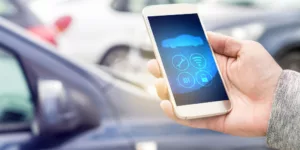Developers want to cater to all of their potential users, but one audience that a lot of app developers overlook are disabled users. This is not a small audience to overlook either. There are about 56 million people who are disabled in the United States.
Apps are such an integral part of life that the American with Disabilities Act considered requiring all mobile apps to meet criteria for people with disabilities. The proposal was introduced and put in place in 2014, but then access regulations were dropped in January 2017.
This amendment drop is good news for all app developers because it allows them to make changes preemptively if new legislation comes to fruition.
What can developers do to cater to their users with disabilities?
Design Color Compliance is a Start
Color compliant apps are very important, but how much do you know about color compliance? A lot of app developers know how to program and bring apps to life, but they have little-to-no knowledge about compliance.
The color-blind community is much larger than most people assume.
The figures are:
- 8% for men
- 0.5% for women
Red-green color blindness is the most common, and this means that a lot of users may not be able to interpret your app’s colors properly. A great option for apps that make use of red and green colors is to provide alternative color options.
Use other colors for primary data rather than red and green for best results.
Color blind users may not be legally classified as having a disability, but ensuring that your app allows for easy viewing is a courtesy that these users will always appreciate.
Multimedia Transcript for Deaf Users
App users that are deaf may be able to figure out how to navigate your app, but when you make use of multimedia, it can become problematic. The user will not be able to hear the media, and this means that they may miss an integral part of your app’s operation.
In this scenario, you have the option of providing a transcript to the user.
Caption confusion can occur, so it’s important to integrate a form of synchronization in your app that helps the user follow along with the multimedia. For example, let’s assume that you have an app that has videos on how to properly tie your shoes.
Well, if the app says “pull the laces upward” well after the shoe has been tied, this will only confuse the user.
All of the captions need to be properly synced with the media. Apps that require quick option based on audio commands make synchronized captioning even more important.
Make Use of Accessibility Frameworks
Accessibility frameworks are already available, and app developers need to use this framework to their advantage. IOS and Android both have frameworks available to help with accessibility issues. There are a lot of features that you can utilize, including:
- Gestures
- Text-to-speech
- Haptic
These features make it easier to integrate ADA-friendly features and functions into your app. You’ll be able to upgrade your current app with many of these features, too.
Larger Text and Button Options
A nice feature to add for anyone with disabilities is to allow for buttons and text to be enlarged. This can be done in the app to make the life of the user a little easier. Older users who may not be able to read smaller text will appreciate these features the most.
Larger buttons can be incorporated to make it easier to navigate and operate the app.
Again, this may not be required, and there may be similar functionality on the operating system level, but when it’s incorporated at the app level, it’s much easier for the end-user.
Developers are even going a step further and deciding that they need to make error messages better understood. This may mean a different icon that’s more universally understood, or it can mean creating a database that explains all of the error codes and messages that may be prompted to the user.
If you’re a small app developer, you may not have the resources to incorporate all of these functions into your app, but adding them will make sure that you’re ready for any future ADA compliance requirements.








